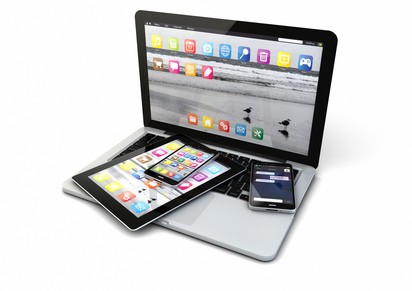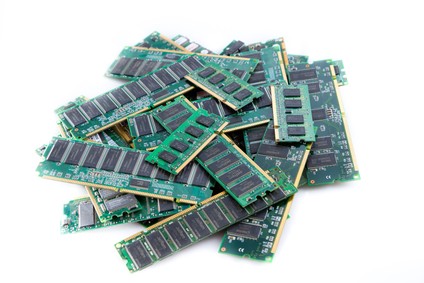Portable Devices – Laptop, Tablet or Smartphone

Suppose you are going outside? What kind of shoes should you put on? You need to know where you are going and what the conditions are. Is it wet out? Then the boots need to be waterproof. Is it cold? Then they need to be warm. No one pair of shoes or boots will be the best for all occasions. What you wear to play in the snow may not be appropriate for a formal occasion.I have a pair of safety boots. I wear them on construction. I have a pair of dress shoes. I wear them to weddings. I have a pair of high rubber boots. I wear them when it is raining. Any of these would serve all three functions, but very not well.
The same with portable devices – computers, smartphones, tablets etc. Any of them will do most of what we need. However different situations call for equipment best suited for the task. I don’t want to spend all day writing, using spreadsheets and doing graphic design on a smart phone or tablet with a touch screen. On the other hand, my laptop won’t fit in my pocket.
So, think about what you want from your portable device.
1. Portability
The desktop is not going to work here. First you need a desk or table to set it on. While the tower may be under the desk, you need space for the monitor, keyboard, mouse, and maybe a work area around it, depending on what you do. It needs to be plugged into an AC outlet. Usually, it has a wired connection for the internet, so you need to be near an Ethernet cable, although a wireless card or USB wireless adapter can be used for wireless access.

The laptop has advantages as a portable device. The challenge is the size of the laptop. People who travel a lot and must carry the laptop want it to be as light as possible, while still giving them the features they need. They range from about 10″ to 17″ with 14″ and 15″ being the most popular. The larger ones are often referred to as a “desktop replacement”, since the size and weight makes them a little harder to tote around. Battery life varies from unit to unit, depending on what you are doing, with 3-4 hours the usual amount. For proper care to maximize battery life, click here.
Tablets have become increasingly popular as a portable device. They have a good battery life. As we do more and more “in the cloud”, a tablet is a perfect choice. Take it with you in a briefcase, knapsack, purse, or just carry it in your hand. a 10″ tablet may weigh 1 1/2 lbs or less, and a 7″ or 8″ typically weighs less than 1 lb.
A smartphone would be the smallest, and easiest to put in your pocket or purse. As you may know, it is small enough to sometimes leave and forget where it is.
2. Portable Devices – Connectivity

Connecting to the internet is important. We may need to keep track of emails, or may use social networks such as Facebook, LinkedIn, Twitter, Pinterest, or any number of other means to connect with friends, family and work.

If you leave the house, how will you do this? The laptop, tablet and smartphone are all portable devices that will connect to public WiFi that may be available at your local coffee shop, library or other location.
The other option to connect, of course is to have a data plan. Unlike free WiFi, this is not free. Enabled devices will need to be registered with a provider or carrier, who will provide data service for a fee. Plans and features vary a lot, so it is good to check all the possibilities before signing up with a carrier. You will need to determine whether you need all the features that are available, or just a few. It may be that a package that is offered will be cheaper than the total of individual features. Almost all laptops are now sold with a wireless card built-in. So you may be able to visit your favorite java spot, connect to their WiFi, and surf the internet while enjoying your hot beverage. Be careful though when connecting to open WiFi. Click here for more about that.
A smartphone will usually include a web browser, while not all tablets can access the web directly. A tablet may be marketed at 3G or 4G or LTE capable, and can use a data plan just like a smartphone. If you want a tablet for connection using a data plan, be sure the one you buy has that feature. Not all do.
If you have a smartphone with a data plan, you may be able to use it to tether your laptop or tablet to the internet. Any questions, ask us.)
3. Portable Devices – Apps

It is safe to say that the biggest advance in software is the”App”. We used to call them programs, or applications, or software.
Popular operating systems, like Windows, Android, and iOS use apps to perform and endless variety of functions. Apps are available (many for free, or a small cost) to do just about anything you can think of and even more. Apps that help you keep track of calories, fuel consumption for your car, find out what movies are playing locally, where the nearest restaurant is, remote controls for your tv, or even your car. The list is endless.
iPhone and iPad will use iOS. Most other makers such as Samsung, will use the Android operating system. These have the most apps available.
If you use a laptop or desktop, you will need Windows 8.0 or 8.1 in order to use the newer apps that are available. The list for these is shorter than for the iOS and Android, but they are trying to catch up. The advantage of the Windows system is the software that is already available. Much of it is designed for Windows up to and including 8.1, but they may not be available for other platforms. A lot of business and design software still require Windows, or Mac to function, and haven’t yet been developed for the Android market.
4. Portable Devices – Storage
If you buy a laptop or desktop one of the numbers you will see is the size of the hard drive. this number has been rising steadily. A big hard drive used to be 500GB, but now 2TB or 2 terabytes are available, which is 4 times the 500GB. You can store 1000’s of pictures, videos, funny stories, or other documents.
A tablet or smartphone, on the other hand, has smaller storage capacities. The usual range is between 8GB and 32GB, while 16GB seems to be quite common. Many will allow and SD card to be installed giving up to an additional 64GB. If you are using your tablet or smartphone for a lot of video and picture-taking, you may soon use up this space. Enter “the cloud”. You will have to decide where to upload all those great pictures. There are many online storage services available with some free storage, such as Sky Drive, Dropbox and many others. Otherwise you may need to transfer the files to your computer. Don’t have a computer? You can transfer them directly to a flash drive or external hard drive. More on that later.
5. Portable Devices – Power

RAM and processor speed affect how quickly things get done with your computer. If you only doing a few things at once, you may not notice any slowdown. But multiple tasks can cause your device to slow down. The newer apps on smartphones and tablets are designed to minimize sluggish behavior, and they can do an amazing number of things with many apps open. Processing power is one of the ways that smartphones and tablets have advanced. The speed they work will be most dependant on how old they are, since the competition for market share drives the increase in speed. Just watch for cheaper off brand models, which may have slow processors. RAM also effects the speed of the device, with most new devices providing 1-2GB of RAM.
Desktops and laptops have more space and less restriction when it comes to RAM and processor speeds. Some newer models can handle up to 64GB of RAM, more than the average user would need. 4-8GB of RAM quite well handles the needs of most home users. Processors too will continue to get faster as the demands on all units continues to increase.
6. Portable Devices – Viewing
This may be quite obvious, but how big a screen do you need? While TV is getting bigger all the time, more and more content is being viewed on the small screen. You may decide that you are ready to buy a tablet or smartphone of your choice, but have you actually watched a video, or tried to surf a web page, on the size of device you are looking at? Try out the different size displays and make sure you can see what you want to see without going to a bigger screen. Most websites have a mobile site, or their own site is optimized for mobile viewing.
What do you use?Smartphone, tablet, laptop or desktop? Or a combination of these?
Use our comments section to tell us what you use and why. What will you buy next?
Still have questions?
Let us know if this information helped you to decide what to buy.
If you need to know more contact us.
